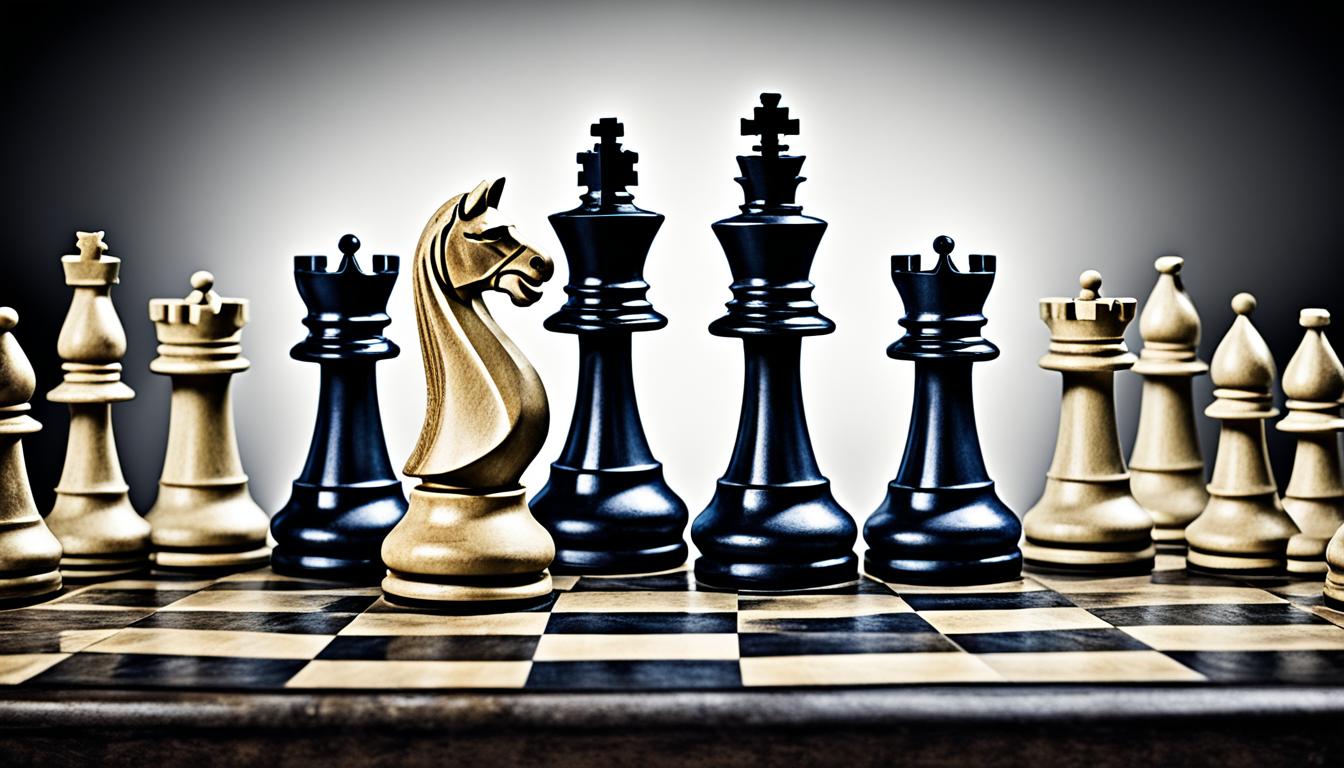Throughout history, some exceptional individuals have changed the game of chess. They were grandmasters and world champions with amazing skills. They have fascinated everyone with their unique styles and unmatched talent.
We’re going to explore the lives and successes of some of the best chess players ever. Let’s look at their strategies and how they contributed to chess.
Key Takeaways:
- Discover the profiles of famous chess champions
- Learn about their playing styles and strategic approaches
- Explore the legacies of these masterminds in the game of chess
- Understand the impact of these champions on chess evolution
- Gain insights into the best chess players of all time
Honorable Mentions in the Chess World
Let’s tip our hats to some chess legends before we look at the top 10. These honorable mentions are outstanding though they didn’t top our list. They have contributed greatly to chess and shown incredible skill.
- Paul Morphy: As a top player of the 19th century, Paul Morphy was remarkable. He didn’t have an official world title but is seen as an unofficial champion. His skills and accomplishments still inspire many today.
- Tigran Petrosian: Tigran Petrosian was the ninth world champion, from 1963 to 1969. Known for his defensive play, he excelled at turning opponents’ weaknesses into his strengths. His game-changing strategies and successful defenses earned him great respect.
- Viswanathan Anand: Viswanathan Anand, or Vishy, is a celebrated grandmaster from India. He was the world champion from 2007 to 2013. Anand is praised for his fast-paced, intuitive gameplay and has been an ongoing force in chess.
“Chess is everything: art, science, and sport.” – Anatoly Karpov
These players have made a huge impact without becoming world champions. Their play styles and skills have made them legends. Up next, we will dive into the top 10 chess players and their legacy.
Alexander Alekhine: The Fourth World Champion
Alexander Alekhine was the fourth world champion, holding the title from 1927 to 1946, except for 1935-1937. He made a significant impact on chess with his distinctive style and skills.
Alekhine was known for his amazing combinational play. He could often bend the usual rules of chess with his deep analysis. His tactics on the board made him a tough competitor, surprising opponents with unexpected moves and piece sacrifices.
One major highlight was his win over Jose Raul Capablanca in 1927. Alekhine, seen as the underdog, demonstrated incredible skill and tactical knowledge. He beat the reigning champion and took the title.
Alekhine’s style was aggressive and full of energy, with bold sacrifices and intricate combinations. He could calculate deeply, finding winning moves that others missed.
Alekhine overcame many challenges throughout his career. He defended his world championship title multiple times, proving himself as a chess legend.
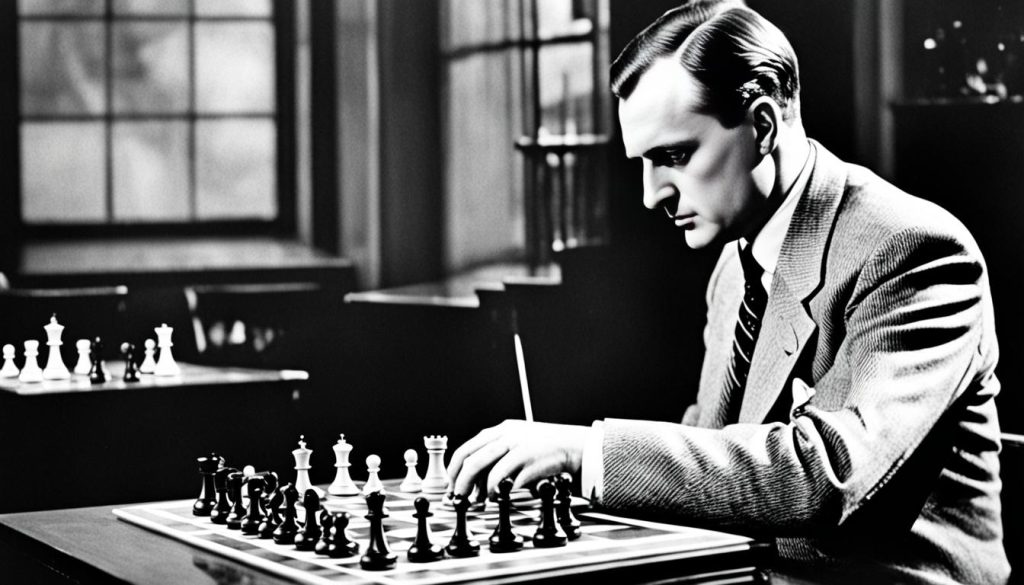
| Year | Opponent | Result |
|---|---|---|
| 1927 | Jose Raul Capablanca | Won |
| 1929 | Efim Bogoljubov | Won |
| 1934 | Max Euwe | Lost |
| 1937 | Max Euwe | Won |
| 1946 | Mikhail Botvinnik | Lost |
Alekhine’s legacy as the fourth world champion has greatly impacted chess strategy. His distinctive style and creativity inspire chess players at all levels.
Mikhail Tal: The “Magician from Riga”
Mikhail Tal became the eighth official world champion and was known as the “Magician from Riga.” He was only 23 and a half when he became the youngest world champion in 1960. He beat Mikhail Botvinnik. Tal was famous for his daring and imaginative play, which inspires many even today.
Tal had a style that was different from the careful ways often seen in chess. He was not afraid to go all out to win, even if it meant losing some pieces for a better position. His amazing tactics and gut feelings led to breathtaking moves that confused his rivals.
Tal’s games were known for their originality, risk-taking, and rule-breaking. He made his opponents falter by creating chaos on the chessboard.
Even with his bold style, Tal knew a lot about positional play. He was good at mixing strategic plans with sudden bursts of action. This made his attacks scarier and harder to fight off.
People who love chess look to Tal’s book, “The Life and Games of Mikhail Tal,” to learn more about him. It’s a chess classic that lets readers into Tal’s mind and shows how he approached his game.
Mikhail Tal, the eighth world champion, left a lasting impression with his way of playing and intuitive moves. His legacy keeps inspiring chess players at all levels. It shows them what you can achieve with creativity and daringness on the chessboard.
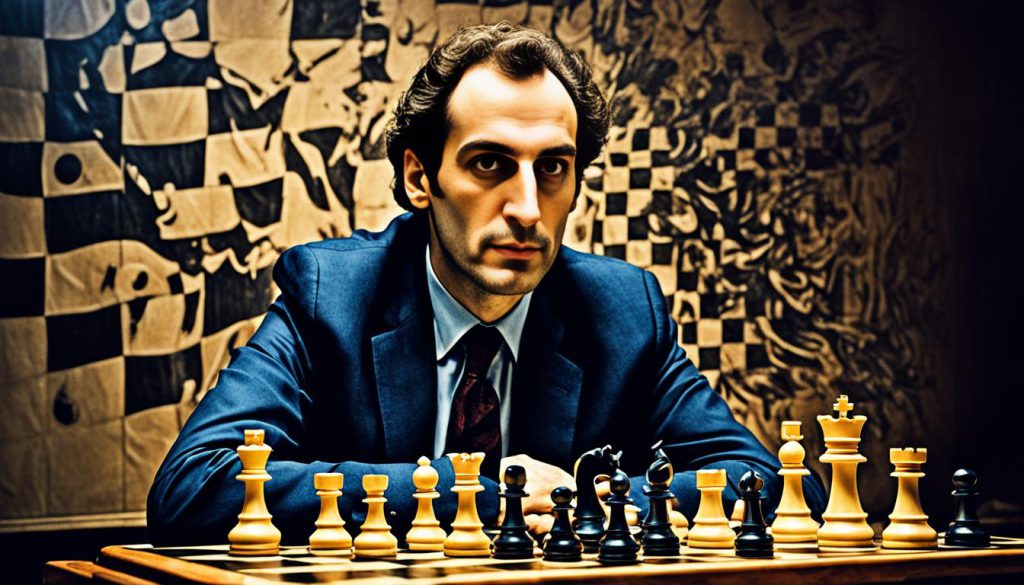
Tigran Petrosian: The Iron Tigran
Tigran Petrosian was known as the “Iron Tigran.” He was world champion from 1963 to 1969. He was famous for his defensive skills and exchange sacrifices, showing a unique style.
He won against Mikhail Botvinnik in 1963 to become champion. In 1966, he kept his title against Boris Spassky. But, he lost to Spassky in 1969. Still, his strategy skills deeply influenced chess.
“Petrosian is not a human being, he is a mysticism,” says grandmaster Lev Polugaevsky.
Petrosian’s defense was like a fortress. It confused aggressive players. His exchange sacrifices revealed his deep game insights.
His play was about patience, solid positions, and sharp strategy. He could stop threats and find opponents’ weak spots.
Petrosian also knew when to attack. His ability to switch from defense to attack was smooth.
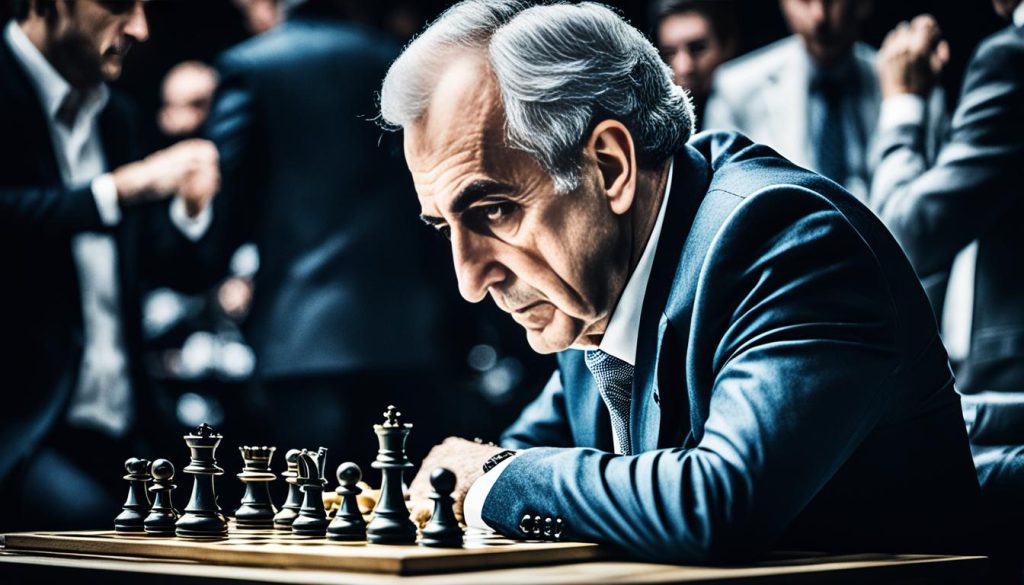
Petrosian faced many top players. His defensive method proved tough to beat. This earned him a strong reputation.
Tigran Petrosian’s Major Achievements:
| Year | Tournament/Match | Result |
|---|---|---|
| 1963 | World Chess Championship | Won (defeated Mikhail Botvinnik) |
| 1966 | World Chess Championship (Rematch) | Retained Title (against Boris Spassky) |
| 1969 | World Chess Championship (Rematch) | Lost (to Boris Spassky) |
Petrosian’s chess impact goes beyond his time as champion. His strategies and inventive style still motivate chess players today.
Boris Spassky: Conqueror of Fischer
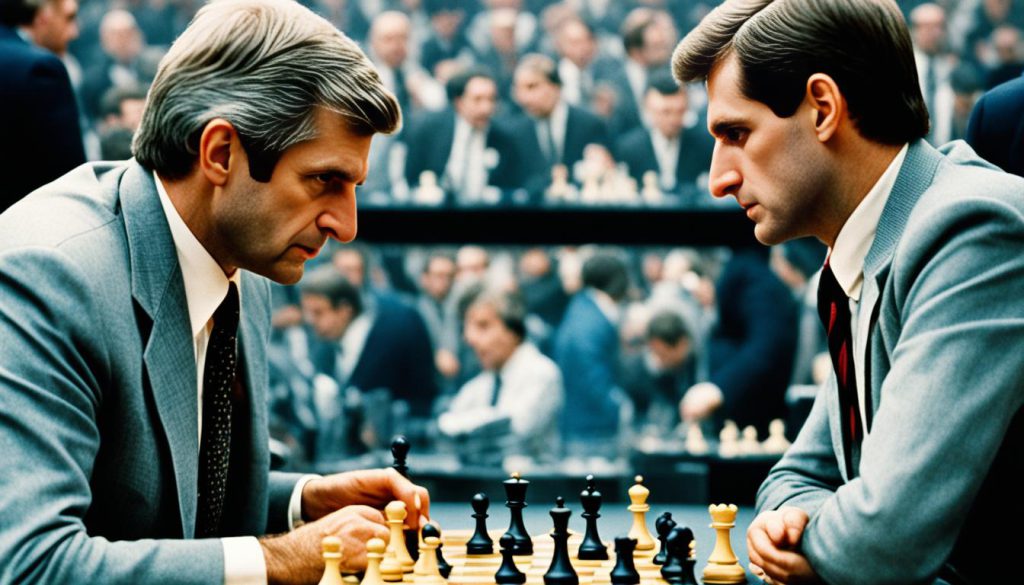
Boris Spassky held the world champion title from 1969 to 1972. He is famous for his 1972 match against Bobby Fischer. The match symbolized the Cold War tensions between the US and the Soviet Union.
It drew global attention. Spassky was known for his adaptable playing style and strong positions. Though he lost to Fischer, his legacy as a top player lives on.
“The match between Fischer and Spassky was more than a game. It reflected the US-Soviet rivalry during the Cold War. The whole world watched their strategic battle keenly.” – Chess Grandmaster
Style and Strategy
Spassky changed his game plan based on the situation. He could be aggressive or tactical, surprising his rivals. This made him tough to beat.
His grasp of strategy let him move pieces in effective ways. He controlled games, challenging even the best players.
The Match of the Century
The 1972 Fischer-Spassky match was more than a chess game. It was seen as a clash of ideals between the US and the Soviet Union. The drama made it even more thrilling.
Fischer’s initial demands caused delays, but Spassky stayed sharp. Their rivalry highlighted the psychological battles in chess.
| Boris Spassky | Bobby Fischer |
|---|---|
| World Champion (1969-1972) | Challenger |
| Strong positional play | Aggressive style |
| Represented the Soviet Union | Represented the United States |
| Respected and revered by his peers | Young prodigy challenging the establishment |
Conclusion
The world chess champions we talk about here are among the best in chess history. Their skills, from Alexander Alekhine’s strategy to Mikhail Tal’s attacks and Tigran Petrosian’s defense, have greatly impacted chess. They have inspired many by showing different ways to play.
These champions have shown us many ways to play the game. They brought new strategies and ideas to chess, pushing it forward. They have influenced how people play chess today and left a big mark on its history.
As chess grows, we remember the contributions of these great players. Their hard work and love for chess have raised the game’s level. Their achievements keep inspiring everyone in the chess world. They will always be remembered and celebrated for lifting chess to greater heights.

